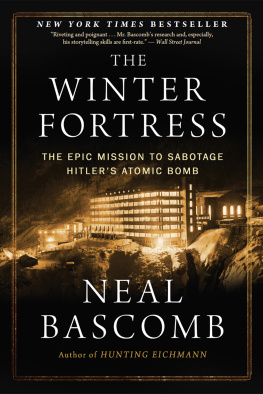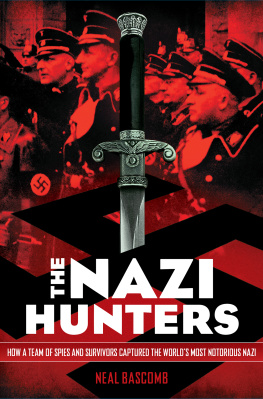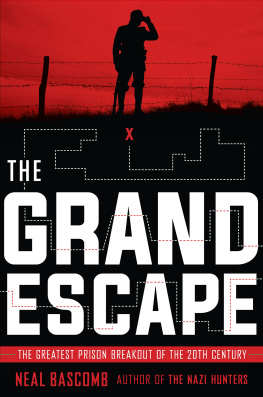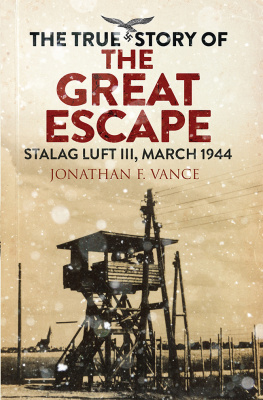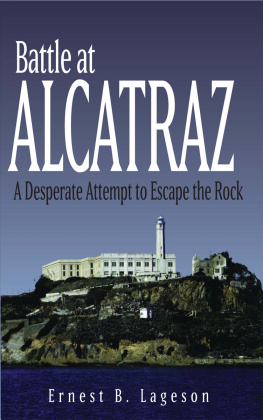Copyright 2018 by Neal Bascomb
All rights reserved
For information about permission to reproduce selections from this book, write to or to Permissions, Houghton Mifflin Harcourt Publishing Company, 3 Park Avenue, 19th Floor, New York, New York 10016.
hmhco.com
Library of Congress Cataloging-in-Publication Data
Names: Bascomb, Neal, author.
Title: The escape artists : a band of daredevil pilots and the greatest prison break of the Great War / Neal Bascomb.
Description: Boston : Houghton Mifflin Harcourt, 2018. | Includes bibliographical references and index.
Identifiers: LCCN 2017058527 (print) | LCCN 2018030636 (ebook) | ISBN 9780544936904 (ebook) | ISBN 9780544937116 (hardcover)
Subjects: LCSH: Prisoner-of-war escapesGermany20th century. | Escaped prisoners of warGreat BritainBiography. | Prisoner-of-war campsGermany20th century. | World War, 19141918Prisoners and prisons. | AirmenGreat BritainBiography.
Classification: LCC D627.G3 (ebook) | LCC D627.G3 B27 2018 (print) | DDC 940.4/7243092321dc23
LC record available at https://LCCN.loc.gov/2017058527
Maps Maeve Norton, Scholastic Inc.
Cover design by Houghton Mifflin Harcourt
Cover images: front cover and spine Getty Images (WWI planes; barbed wire and wall) and Shutterstock (watchtower; dark sky); back cover Daily Mirror / Mirrorpix via Getty Images
Author photograph Meryl Schenker Photography
v1.0818
To Liz and Susan, my editors par excellence
Stone Walls do not a Prison make. Nor Iron bars a Cage.
Inscription to Holzminden cell wall,
from Richard Lovelace poem To Althea, from Prison
It seems to me that we owed it to our self-respect and to our position as British officers to attempt to escape, and to go on attempting to escape, in spite of all hardships.
A.J. Evans, inveterate World War I breakout artist
Main German prisoner of war camps in the narrative

A Map of Holzminden

A cross-section of the working area and entrance to the tunnel

Progression of the tunnel
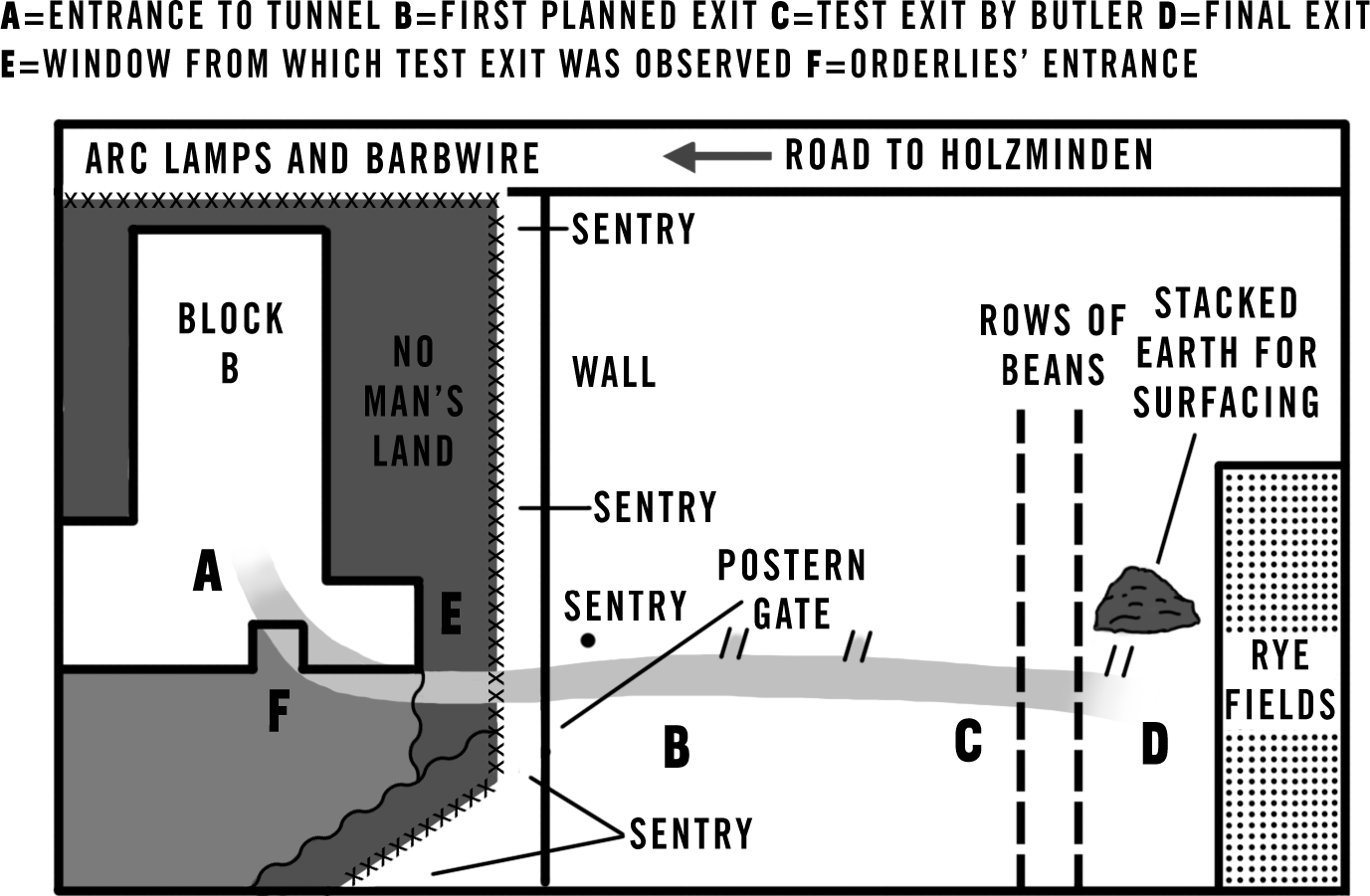
The final route of Blain, Kennard, and Gray, as well as Rathbornes train journey
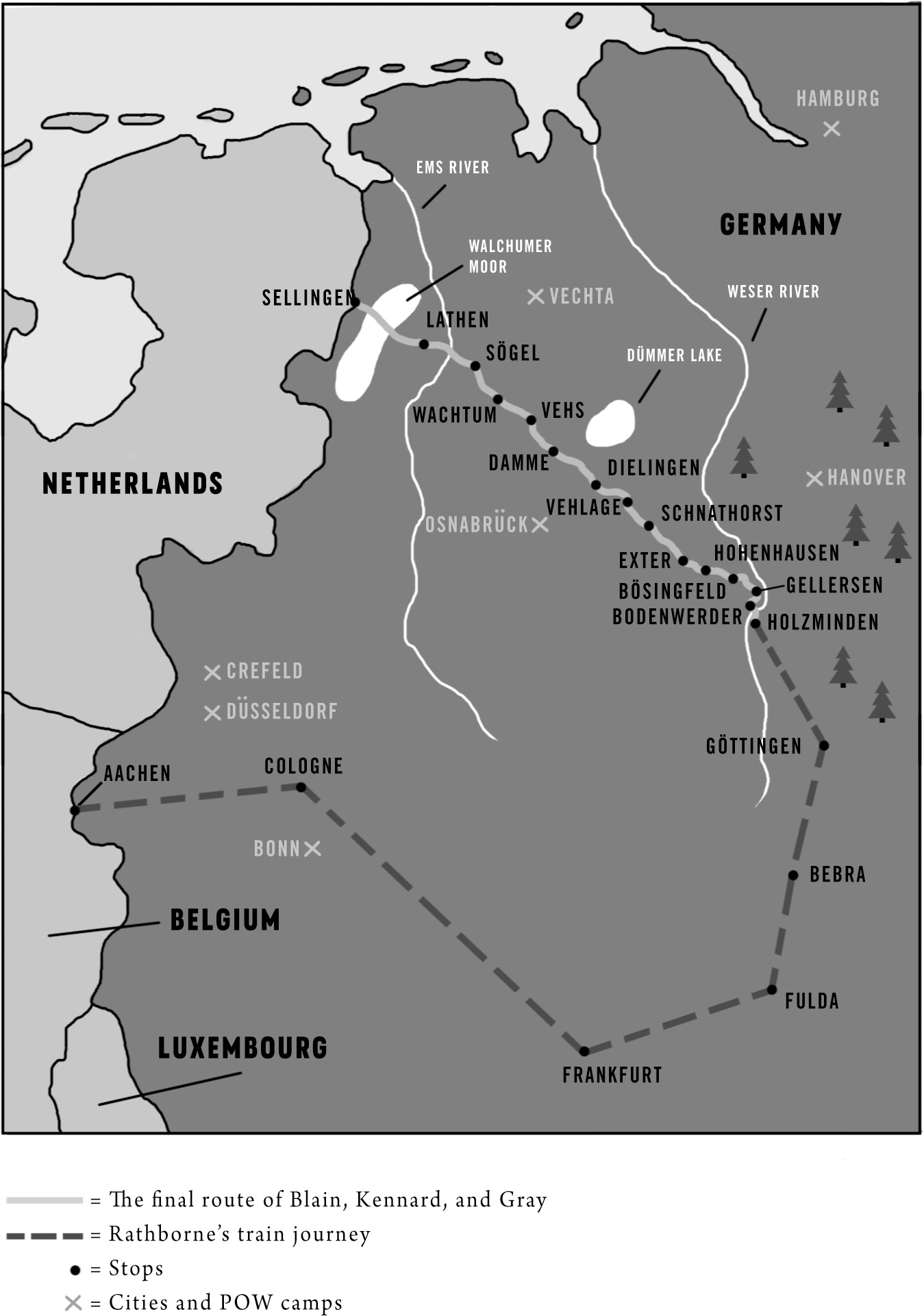
Dramatis Personae
Key Holzminden Escape Artists
Captain David Gray, Father of the Tunnel, Royal Flying Corps (RFC) pilot
Second Lieutenant Cecil Blain, RFC pilot
Second Lieutenant Caspar Kennard, RFC pilot
Lieutenant Colonel Charles Rathborne, senior British officer, Royal Naval Air Service (RNAS) wing commander
Sublieutenant Leonard James Bennett, RNAS observer
Other Holzminden Prisoners
Second Lieutenant Frederick William Harvey, the Poet, Gloucestershire Regiment
Lieutenant William Shorty Colquhoun, Princess Patricias Canadian Light Infantry, originator of the tunnel
Second Lieutenant William Ellis, RFC pilot, originator of the tunnel
Captain Joseph Rogers, member of the Pink Toes, Durham Light Infantry
Captain Frank Mossy Moysey, member of the Pink Toes, Suffolk Regiment
Private John Dick Cash, camp orderly, Australian Imperial Force
Lieutenant Harold Medlicott, RFC pilot
Captain Hugh Durnford, adjutant to Rathborne, Royal Field Artillery
Second Lieutenant William Leefe Robinson, Zeppelin killer, RFC pilot
Captain Douglas Grant, London Scottish Regiment
German Officers
General Karl von Hnisch, head of the 10th Army Corp Division
Karl Milwaukee Bill Niemeyer, Strhen and Holzminden commandant
Heinrich Windy Dick Niemeyer, Clausthal camp officer
Commandant Blankenstein, Osnabrck camp
Commandant Grben, Gtersloh camp
Commandant Courth, Crefeld camp
Commandant Dietz, Schwarmstedt camp
Commandant Wolfe, Clausthal camp
Prologue
July 14, 1941
For all his wife, Elsie, and two young children knew, Jim Bennett was leaving for an overnight business trip. As he was the eponymous owner of a small import-export business that traded in china, couture clothes, and other fine goods, they expected such absences, even during wartimeperhaps especially during wartime. No effort could be spared in keeping the bottom line from seeping red.
Dressed in a light-gray tailored suit with a white linen handkerchief in his pocket, he bid his family goodbye and walked out the front door of his five-bedroom brick house in Northwood, a bucolic neighborhood threaded with golf courses fifteen miles northwest of London. The son of a farmer, Bennett had come a long way from the rolling fields of Somerset.
Carrying a brown leather suitcase heavier than one might imagine he would need for an overnight, Bennett joined the others heading down Kewferry Road at morning rush hour to the Metropolitan line London Underground station. Few could keep to his normal brisk pace, even with the skies threatening a thunderstorm. At forty-nine and with thinning, salt-and-pepper hair, Bennett remained trim and fit.
On the half-hour ride into the city, there was plenty of time to page through the Daily Express. Its headlines read, Moscow Denies Claims by Berlin and Nazis Flee from Syria. Most interesting to Bennett was the story about the British air raid on Bremen, Germany. On the thirty-second-straight night of attacks into Germany, bombers had struck the citys shipbuilding yards and factories. Two British planes had not returned to base, the fate of their crews unknown. With the number of these raids accelerating every month, and more and more airmen shot down, Bennett knew that his particular expertise was in very high demand.
He switched lines at Baker Street and arrived soon after at Paddington railway station, not far from his offices. Three months before, the station had suffered a direct hit by German bombers that demolished the southwest corner and killed eighteen people. In quick order, the rubble was hauled away from the tracks and train service resumed. Still, the piles of bricks and hollowed-out windows bore witness to the destruction that could rain down on London at any moment. Bennett boarded the 10:30 Great Western to Penryn, Cornwall, and settled into the second-class carriage for the five-hour journey.
His firm had no business on the southwestern tip of England. Nor was he traveling there for its sandy beaches, now fortified with pillboxes, minefields, and barbwire enclosures against the threat of a German attack. Instead he was headed to the Royal Air Force base at Predannack to lecture fighter-squadron pilots on what to do if they found themselves captured or on the run in enemy-occupied territory. In his suitcase was an Optiscope projector that looked like a small cannon, a number of slides, purses of foreign currency, silk maps, and compasses hidden in button studs. Earlier that morning, before his family awoke, he had taken these items out of the locked chest of drawers he kept in the house.

